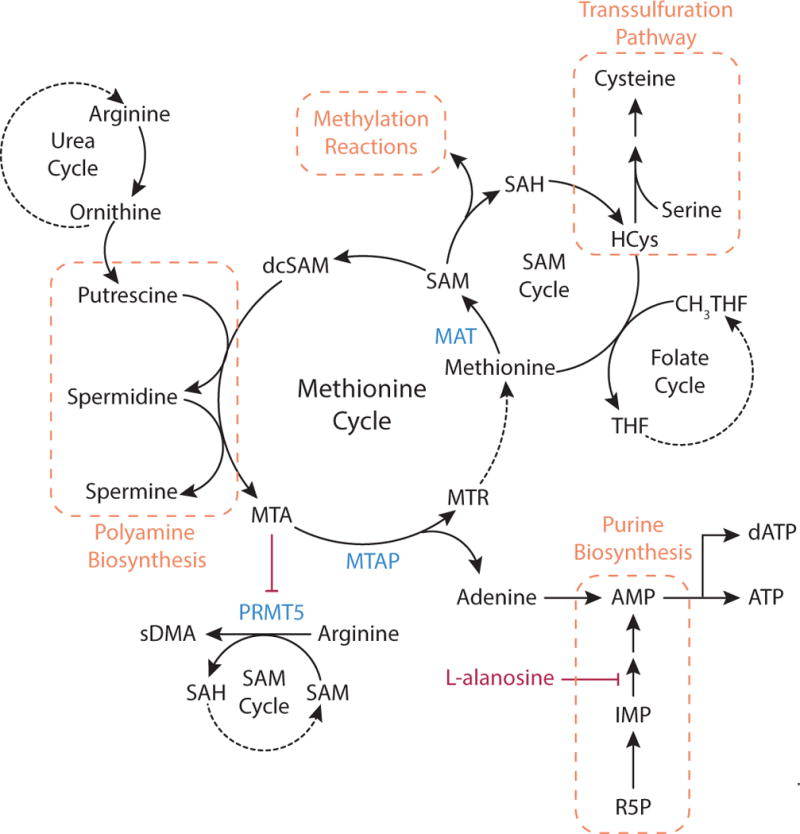Figure 8. Methionine Cycle.

Methionine is an essential amino acid that can be used for methylation reactions, cysteine synthesis, and polyamine generation. Methionine is converted to S-adenosylmethionine (SAM) by methionine adenosyltransferase (MAT). Methyl transferases utilize SAM as the methyl donor for many methylation reactions in cells. Demethylation of SAM generates S-adenosylhomocysteine (SAH), which is hydrolyzed to homocysteine (HCys) and adenosine. Methionine is regenerated from homocysteine by transfer of the methyl group from N5-methyl-THF (CH3-THF). Homocysteine is also an intermediate of cysteine synthesis, where serine and homocysteine condense and form cysteine via the transsulfuration pathway. SAM can also support polyamine synthesis when SAM is decarboxylated to form S-adenosylmethioninamine, also known as decarboxylated S-adenosylmethionine (dcSAM). Together with the urea cycle metabolite ornithine, this compound generates putrescine and subsequently spermine and spermidine. In these reactions, dcSAM is converted to 5′-methylthioadenosine (MTA). Accumulation of MTA inhibits the enzyme protein arginine N-methyltrasferase 5 (PRMT5), which uses SAM as a methyl donor to synthesize symmetrical dimethylarginine (sDMA) from arginine. In the methionine cycle, MTA is cleaved to 5-methylthioribose-1-phosphate (MTR) and adenine by the enzyme methylthioadenosine phosphorylase (MTAP). Adenine can be converted to AMP, and the adenosine analogue L-alanosine can limit AMP production via the purine synthesis pathway. MTR can be converted to methionine, completing the methionine cycle.
